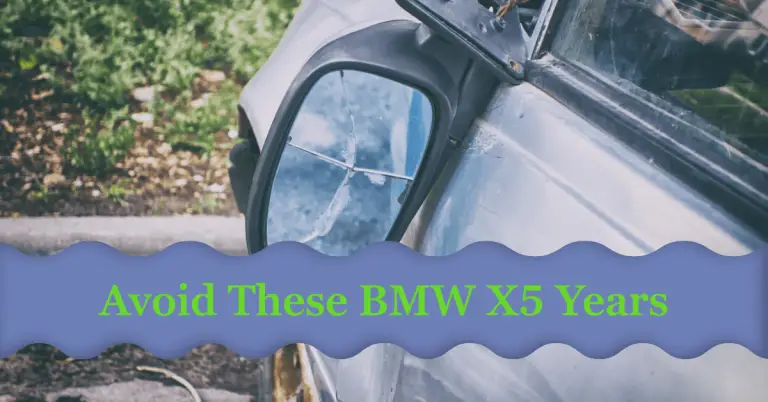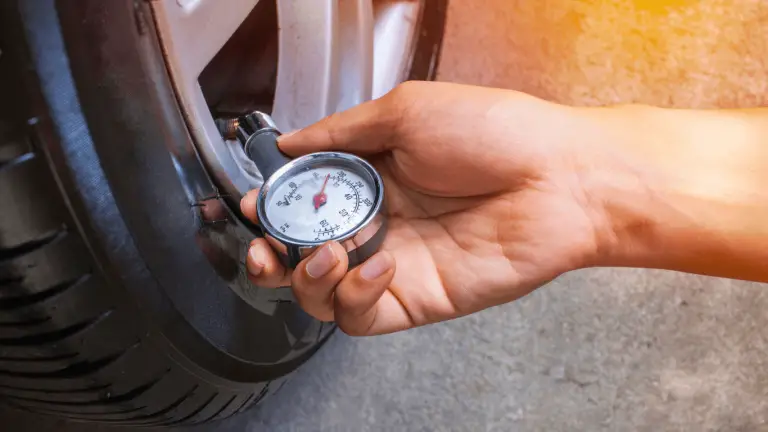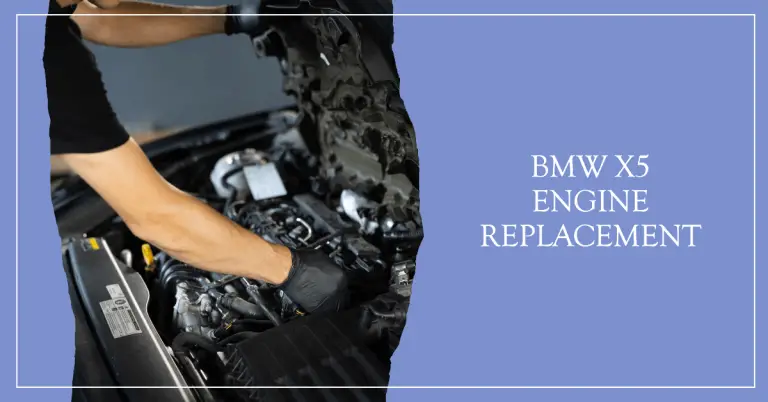How Long Do BMW X5 Last? What Owners Can Expect
So you’re interested in getting behind the wheel of a BMW X5. This luxury midsize SUV offers a smooth ride, stylish interior, and plenty of power. But before you start searching for an X5, you probably want to know – how long do BMW X5 models last?
The short answer is that properly maintained BMW X5 SUVs can easily reach 150,000 to 200,000+ miles. With routine maintenance and care, you can expect a decade or more of enjoyable driving from this well-built German luxury vehicle.
In this detailed guide, we’ll dive into everything you need to know about the durability, lifespan, repair costs, common issues, and tips to maximize longevity with the BMW X5. Let’s get started!
Overview of BMW X5 Reliability and Durability
The BMW X5has earned a reputation for being a highly capable yet dependable luxury SUV. While maintenance costs are higher than average, the X5 is designed to last when properly cared for.
Here’s a quick overview of what owners can expect in terms of longevity from a BMW X5:
- Typical lifespan ranges from 150,000 miles up to 200,000+ miles for well maintained models. With proper care, it’s not unusual for an X5 to reach 15+ years of reliable service.
- These SUVs are well-built overall when maintenance is kept up. Owners report the engines and drivetrain components are durable.
- Expect repairs after 100k miles.Components like the suspension bushings, sensors, gaskets, and pumps may need replacement around this mileage.
- Preventative maintenance is keyto avoiding major issues. Stick to the factory recommended service intervals.
- For a luxury SUV, repair costs are reasonable. Parts and labor rates are higher than average but comparable to other European brands.
Proper care goes a long way towards ensuring your X5 remains happy and healthy for many miles. While no vehicle lasts forever, the X5can reward diligent owners with great longevity.
What Factors Impact the Lifespan of a BMW X5?
To maximize the lifespan of your X5, it’s helpful to understand what exactly puts wear and tear on the vehicle. Here are some of the key factors that impact longevity:
Routine Maintenance and Repairs
Like any vehicle, staying on top of maintenance and addressing any issues immediately keeps an X5 in good running order. Neglecting services like oil changes, fluid flushes, new belts, and worn part replacement reduces longevity substantially.
Owner Driving Habits
Your individual driving style impacts wear and tear. Frequent short trips, stop-and-go driving, and hauling heavy loads accelerate engine and transmission wear. Allowing the engine to properly warm up and not accelerating aggressively extends component life.
Towing Heavy Loads
The X5 can tow up to 7,200 pounds when properly equipped. While the SUV is designed for respectable towing duty, hauling at or near max capacity frequently adds strain and increases the wear on components like the transmission, suspension, chassis, and drivetrain.
Environmental Factors
Driving in harsh conditions can shorten lifespan. Frequent exposure to elements like road salt in the winter, dust, debris, and extreme heat or cold temperatures causes wear on the chassis, body, and drivetrain over time.
Vehicle History and Previous Care
Obviously how the previous owner maintained the X5 and if it has accident history impacts durability. Poor maintenance history or prior damage means more repairs sooner. A well-documented service history and clean history report are ideal.
Paying attention to these factors will help you optimize longevity from your BMW X5. Proper care and avoiding excessive wear gives you the best odds of surpassing 150,000 miles and beyond.
How Does BMW X5 Longevity Compare to Other Luxury SUVs?
The X5 goes head-to-head with other midsize luxury SUVs like the Lexus RX, Audi Q5, Acura MDX, and Infiniti QX60. Here’s how the BMW stacks up to rivals in terms of longevity:
Lexus RX and Audi Q5
The top competitors to the X5 in the segment, the Lexus RX and Audi Q5 are closely matched in average lifespan. Well maintained models typically reach around 150,000 miles on average. The Lexus may have a slight edge in lowest cost of ownership.
Acura MDX and Infiniti QX60
These midsize SUVs are regarded as two of the longer-lasting options in the class. Routinely maintained MDX and QX60 models often surpass 200,000 miles. Their longevity outshines most competitors, including the X5.
BMW X5
Overall, the BMW X5 matches or exceeds the durability you can expect from rival luxury SUVs. Proper maintenance brings the potential to hit 200,000+ miles. The X5 has comparable or better longevity versus Lexus and Audi and narrowly trails Acura and Infiniti.
So while not the undisputed durability leader in its class, a gently driven and well-cared for X5 has impressive stamina that meets or beats its closest rivals in the luxury SUV segment.
Common BMW X5 Problems at Higher Mileage
Even with diligent maintenance, repairs are inevitable as an X5 accumulates miles – especially over 100k. Here are some of the more common issues owners may encounter:
Oil Leaks
One prevalent issue on higher mileage X5s is oil leaks from places like the valve cover gasket, oil filter housing gasket, engine oil pan gasket, and other engine seals. Keep an eye out for external leaks.
Water Pump and Thermostat Failure
The water pump circulates coolant through the engine and commonly fails around 100k miles along with the thermostat. Watch for overheating or coolant leaks as signs of issues.
Mass Air Flow Sensor Problems
The mass air flow (MAF) sensor monitors airflow into the engine. Contaminants on the sensor can cause rough running or stalling issues. Replacement may be needed if cleaning doesn’t remedy problems.
Idle Control Valve Issues
The idle control valve regulates engine idle rpm. When it fails, symptoms like rough idling, stalling, or abnormal rpm may occur. Replacement of the valve and hoses may be required.
Faulty Fuel Injectors
Problems like dirty fuel injectors can pop up after 100k miles. This may cause rough running, poor acceleration, bad gas mileage, or misfires. Professional cleaning or replacement may be needed.
Power Steering Leaks
Leaks in the power steering hoses, pump, and other components often appear with higher mileage. Watch for fluid puddles under the X5 or steering wheel stiffness.
Suspension and Chassis Wear
With advanced age and mileage comes expected wear on suspension and chassis parts like ball joints, bushings, springs, shock absorbers. These may need servicing to restore ride comfort and handling.
Being proactive about addressing any problems early reduces the chances of cascading failures and major issues down the road. Even with higher miles, continued preventative maintenance helps minimize headaches.
What Are Typical BMW X5 Maintenance Costs?
Maintenance and repair costs are understandably higher for a luxury vehicle like the X5 versus a non-luxury brand. But expenses remain reasonable given its positioning in the market. Here are some example service costs:
- Oil Changes – Expect to pay $80-$120 for a full synthetic oil change at a dealer or independent BMW specialist. Higher capacity engines may cost slightly more.
- New Tires – A set of four new tires will be around $800-$1,000 for standard all-season models. Larger wheel sizes, performance tires, and run-flats may cost considerably more.
- Brake Pad Replacement – Front or rear brake pad replacements typically run $300-$700 for parts and labor, varying by shop and vehicle configuration.
- Spark Plug Replacement – For a 6 cylinder engine, a complete set of new plugs will cost around $400 give or take. V8 models cost more.
- Transmission Fluid Change – This important service runs $150-$250. Consider a fluid flush if changing for the first time at higher mileage.
- Coolant Flush – To maintain the cooling system, a flush costs around $150 using the recommended BMW antifreeze.
- Battery Replacement – A new OEM or high-quality aftermarket battery costs $150-$350 plus labor for installation. More for larger AGM batteries.
The good news is while pricier than a non-luxury brand, maintenance costs are on par for the segment when going to reputable service centers. With some DIY repairs, costs can be managed. Overall repair expenses remain reasonable for the X5 class of vehicle.
Tips to Maximize BMW X5 Lifespan Past 200,000 Miles
To maximize the lifespan of an X5 for well over 200,000 miles, here are some expert tips:
1. Follow the Maintenance Schedule Diligently
Stick to the factory recommended maintenance schedule in the owner’s manual for services like oil changes, fluid flushes, spark plug replacement, engine air filters, cabin air filters, and inspections.
2. Address Check Engine Lights Promptly
Never ignore a check engine light or service reminder. Have codes scanned ASAP to identify issues early before they snowball into larger problems.
3. Use Only High-Quality Fuel and Oils
Fuel the X5 with top tier gasoline and use manufacturer approved synthetic oils for changes. Quality fuels and lubricants protect critical components.
4. Change Oil Frequently
Stay vigilant with oil changes, doing them every 5,000-7,500 miles. Use a quality synthetic oil like BMW or Castrol brands recommend.
4. Replace Worn Parts Before Failure
As high mileage parts wear like belts, hoses, spark plugs, shocks, etc. replace them before failure to avoid breakdowns or stranded situations.
5. Fix Any Leaks Quickly
Address any fluid leaks like oil, coolant or power steering immediately. Small leaks can turn into major repairs if neglected.
6. Drive Smoothly and Avoid Excessive Loads
Your driving style impacts wear and tear. Accelerate gently, avoid hauling heavy cargo frequently, and don’t push the engine excessively. Let the engine warm up before high loads.
7. Perform a Pre-Purchase Inspection
When buying a used X5, have it thoroughly inspected by a BMW specialist to assess wear and identify upcoming maintenance needs.
8. Keep Up On Services
Stay diligent about preventative maintenance, repairs, and following the factory maintenance schedule even after 100k miles. Don’t start neglecting care.
Treat your X5 well and it will reward you with many carefree miles. Prioritize maintenance, make repairs quickly, and drive moderately to maximize your BMW’s longevity.
Conclusion
For those looking for a long-lasting luxury SUV, a BMW X5 properly cared for can easily reach 150,000 to 200,000 miles and beyond. While maintenance costs are higher than non-luxury brands, they are reasonable for the class of vehicle. With diligent preventative upkeep and addressing repairs promptly, an X5 will reward owners with great reliability and many years of enjoyable driving.
Follow the tips above to optimize your X5 for a long lifespan. Perform critical preventative maintenance on schedule, address problems early, use quality fluids and parts, and drive with care. Maintain vigilance even after 100k miles. With the right diligent care, your X5 will provide comfort, class, and performance for many miles ahead.







